The vibrant cultural scene, friendly communities, and stunning natural landscapes make Argentina an enticing destination for both locals and expatriates seeking a high quality of life. From the scenic wine regions of Mendoza to the historical richness of Cordoba, every corner of Argentina boasts its own distinct character and opportunities.
Whether you choose to settle in a bustling metropolis or a tranquil countryside, Argentina's warmth, beauty, and welcoming spirit will make you feel right at home. So let's embark on a new adventure and discover your perfect place to live in this captivating South American nation.
Secure Peace of Mind with Best-Value International Health Coverage
International Citizens Insurance provide free, no-obligation quotes from the leading international health insurance providers with plans tailored to meet your needs. Trusted by thousands of expats worldwide.
1. Buenos Aires
Buenos Aires, the main city of Argentina, is a bustling hub of activity. The city is known for its vibrant cultural scene, encompassing theater, ballet, restaurants, and thriving nightlife.
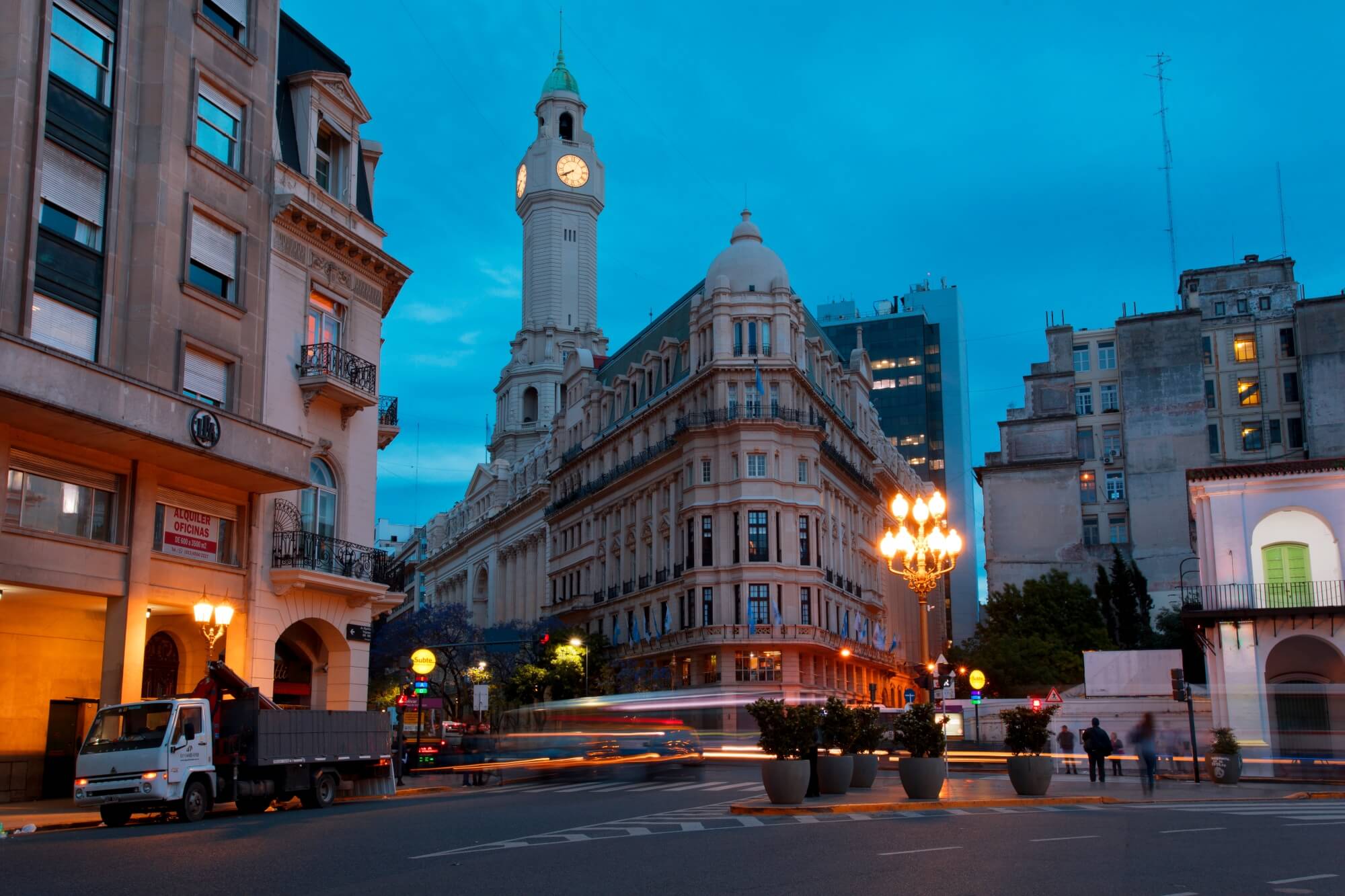
There is a huge expat community in Buenos Aires of every nationality you can only name, providing ample networking opportunities and connections.
Buenos Aires is perfect for working professionals and digital nomads.
You will get a lively atmosphere, endless entertainment options, and activities, including world-class museums, art galleries, live music, tango shows, and outdoor festivals.
The cost of living is more than affordable. For example, rent in Buenos Aires is, on average, 90.4% lower than in New York. It is possible to find a one-bedroom apartment in a good area for about $390. A single person can live here very comfortably on $500 without rent.
As far as safety is concerned, it's a big city extremely popular with tourists, so exercising caution is necessary. Keep an eye on your belongings all the time, don't put anything in your back pockets, and try to avoid wandering around alone at night.
The neighborhoods in BA are diverse and offer options for all tastes and budgets. Our guide on the best neighborhoods in Buenos Aires offers a detailed review of the most popular areas.
There are excellent healthcare facilities, a well-developed public transportation system, and various green spaces, including parks and gardens. The Internet is good. Co-working spaces are available across the city, such as Usina Co-working in Palermo or Ramsay CoWorking Space in Retiro.
2. Mendoza
Mendoza, the capital of the Province of Mendoza, has around 1.2 million people, making it the fourth-largest city in Argentina. The region is known for producing some of the best wines in the world. This makes it an attractive location for wine enthusiasts and expats looking for a relaxed lifestyle.
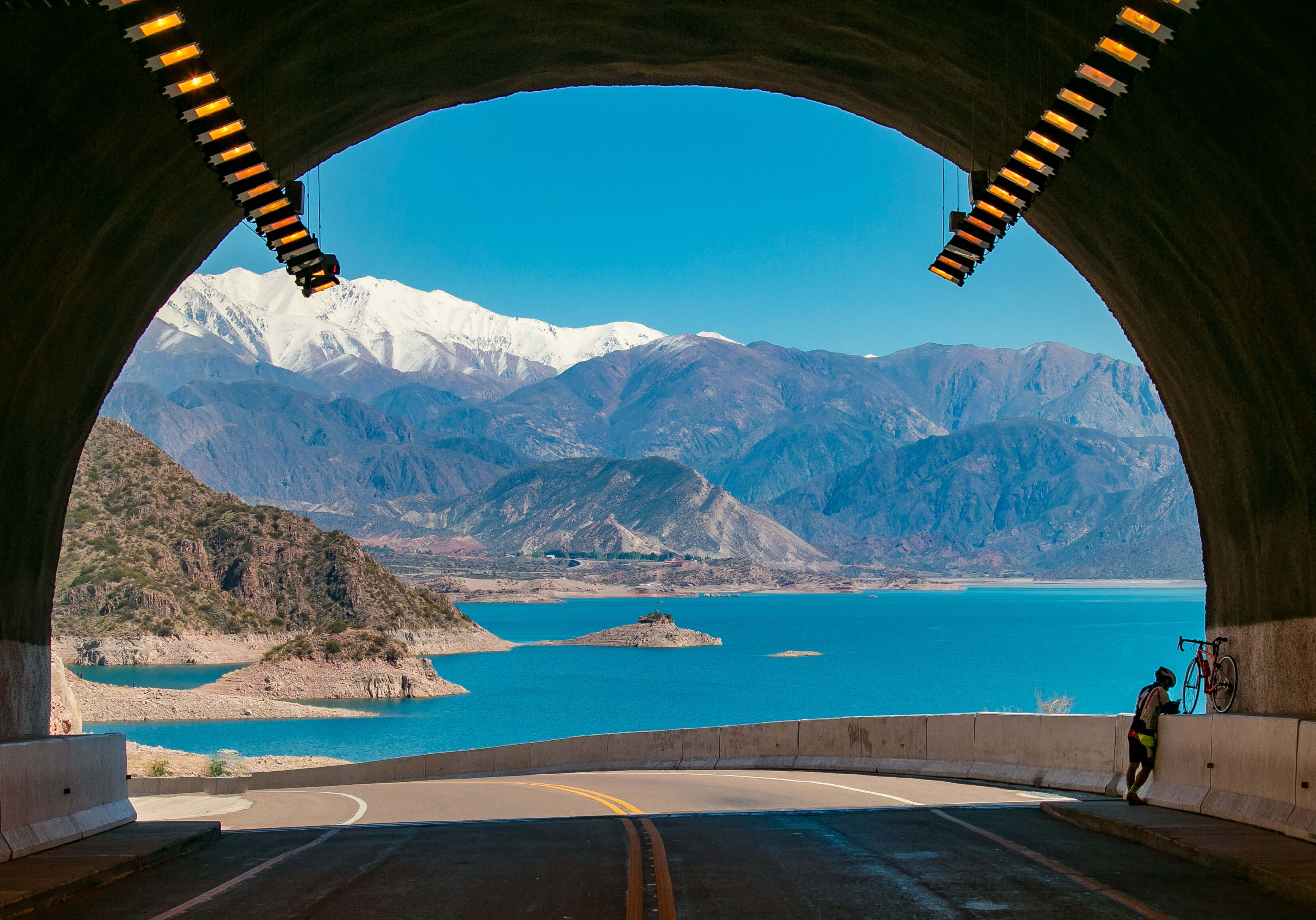
The city itself has a growing expat community, mostly consisting of retirees and students.
Mendoza is well-connected as it has an international airport called Governor Francisco Gabrielli International Airport, also known as El Plumerillo International Airport, which offers flights to various domestic and international destinations.
If you love the outdoors, Mendoza is the right place to be. It is surrounded by stunning natural scenery, including the Andes Mountains, so hiking, skiing, and mountain biking are infinitely great!
Mendoza offers a tranquil and relaxed atmosphere, making it a city where you can unwind and enjoy a calmer environment.
Unlike the busy streets and constant traffic noise in Buenos Aires, you won't experience the same level of noise and movement in Mendoza. It's a laid-back place.
You'll find some areas in the city where the nightlife thrives, as well as plenty of places to relax and unwind.
Mendoza provides all the necessary conveniences you need, such as supermarkets, Western Unions, and banks, without the overwhelming chaos you might encounter in the capital city.
When it comes to safety, Mendoza feels quite secure. Unlike in Buenos Aires, you won't constantly feel the need to check your phone and wallet.
The entertainment heart of Mendoza is Avenida Aristides. It provides shopping in the daytime, while right after the siesta, numerous pubs, bars, and restaurants open their doors to locals and tourists enjoying a night out.
A couple can live a comfortable life here for $600 without rent. A lovely one-bed apartment in a good location can cost about $400. But you can find cheaper options too.
Mendoza is a pretty walkable city, so you won't feel anything is too far away. You can use city buses when you don't feel like walking.
Find out more about the city and the province in our Living In Mendoza guide.
3. Mar del Plata
Mar del Plata is a coastal city in the Buenos Aires Province of Argentina. Nicknamed La Feliz or "The Happy City," this is the best option if you are looking for an urban lifestyle by the sea.

It's a great place for expat retirees and digital nomads, primarily because of its beachfront location, reliable wifi infrastructure, and affordable cost of living.
Mar del Plata is very touristy, so, during the peak tourist season from December to March, it becomes very crowded and a bit less safe. In January and February, it is hectic, and the weather is hot.
It's best to plan your move here so that you come out of season. It will be easier to explore the place and find suitable rental accommodations.
The average cost of rent for a one-bedroom apartment in the city center is around $250 per month. A three-bedroom apartment in the same area can cost around $500 monthly.
Mar del Plata is well-connected to Buenos Aires. A direct train from Mar del Plata to Constitución Station in BA takes around 6 hours. As an alternative, you might consider taking a bus. Buses from Mar del Plata arrive at Retiro Bus Terminal in BA.
Overall, Mar del Plata offers a high quality of life, with beautiful beaches, a lively cultural scene, and various outdoor activities like surfing, fishing, and hiking.
4. Córdoba
Córdoba is the second-largest city in Argentina.
While Córdoba is a significant urban center in Argentina, it is not as large as Buenos Aires. So, living here, you get all the perks of urban life but less hype, less traffic, general chaos, and a more chill vibe as compared to Buenos Aires.
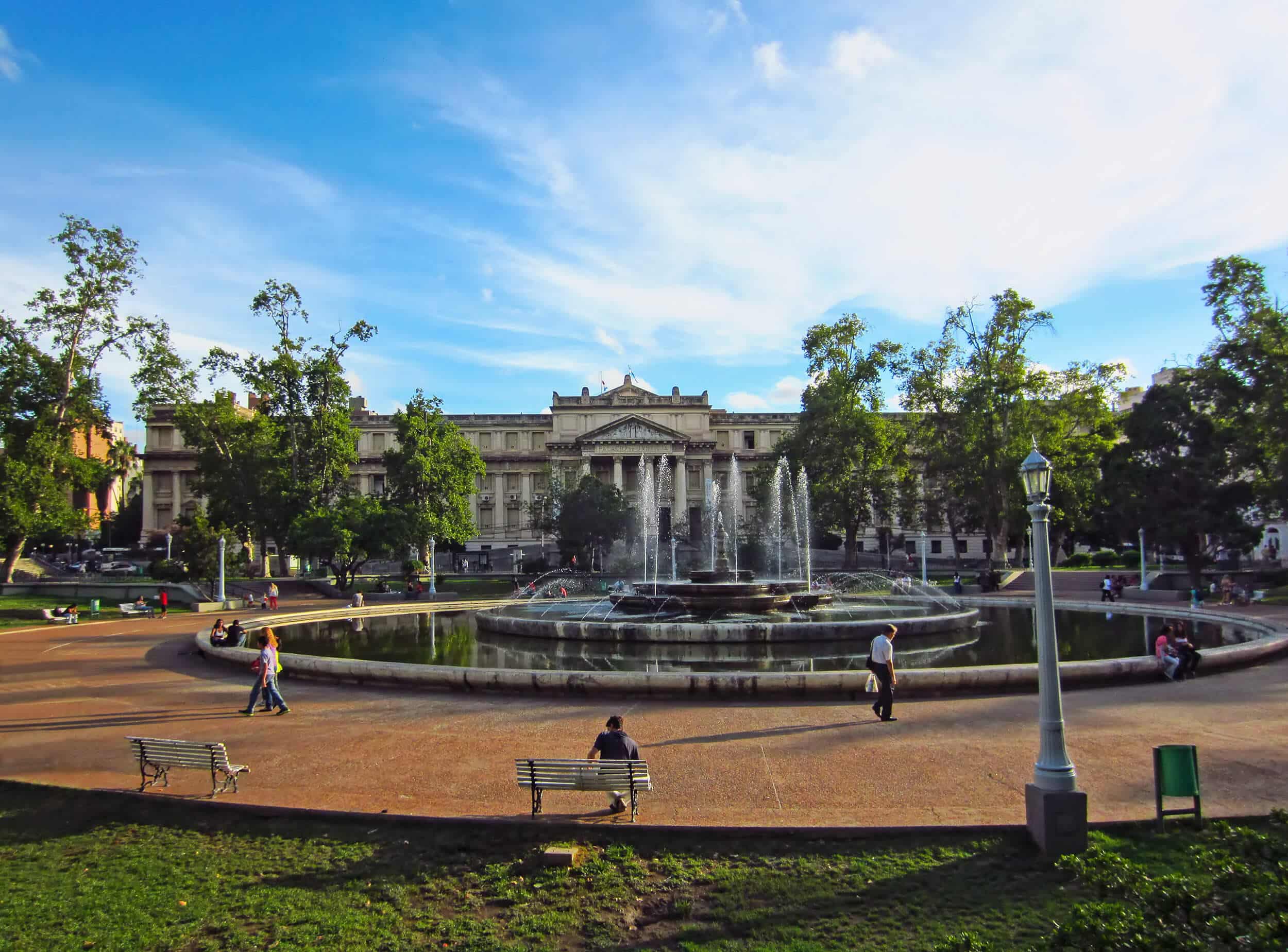
It also has quite a lot of students and a young edge to it as there are seven different universities here, including a very popular and prestigious National University Of Córdoba.
Thanks to its young student population, the nightlife in Córdoba is lively, particularly in the Neuva Córdoba area. On Friday and Saturday nights, the bars and discos in this area are bustling with activity.
The city is surrounded by stunning nature, giving the whole place a relaxed and laid-back atmosphere.
The whole province is famous for its mountainous landscapes. Within approximately 30 minutes, you can find rivers and hiking trails, including the renowned Los Gigantes.
Córdoba is more affordable than Buenos Aires. A good one-bedroom apartment in a central location can cost about $300 a month.
Travelwise, the city is well-connected. The nearest airport to Córdoba is Córdoba (COR) Airport, 11.3 km away.
The public transportation system in Córdoba is sound, including buses and taxis, making it easy to get around the city.
All amenities, including good schools, hospitals, shops, and infrastructure, are available.
English is commonly spoken in the city, so there is no need to worry about the language barrier. However, trying to learn and speak Spanish will earn you brownie points with the locals.
5. Villa Carlos Paz
If Córdoba feels too big, but you love the region, check out Villa Carlos Paz, just 36 km (22 miles) away.
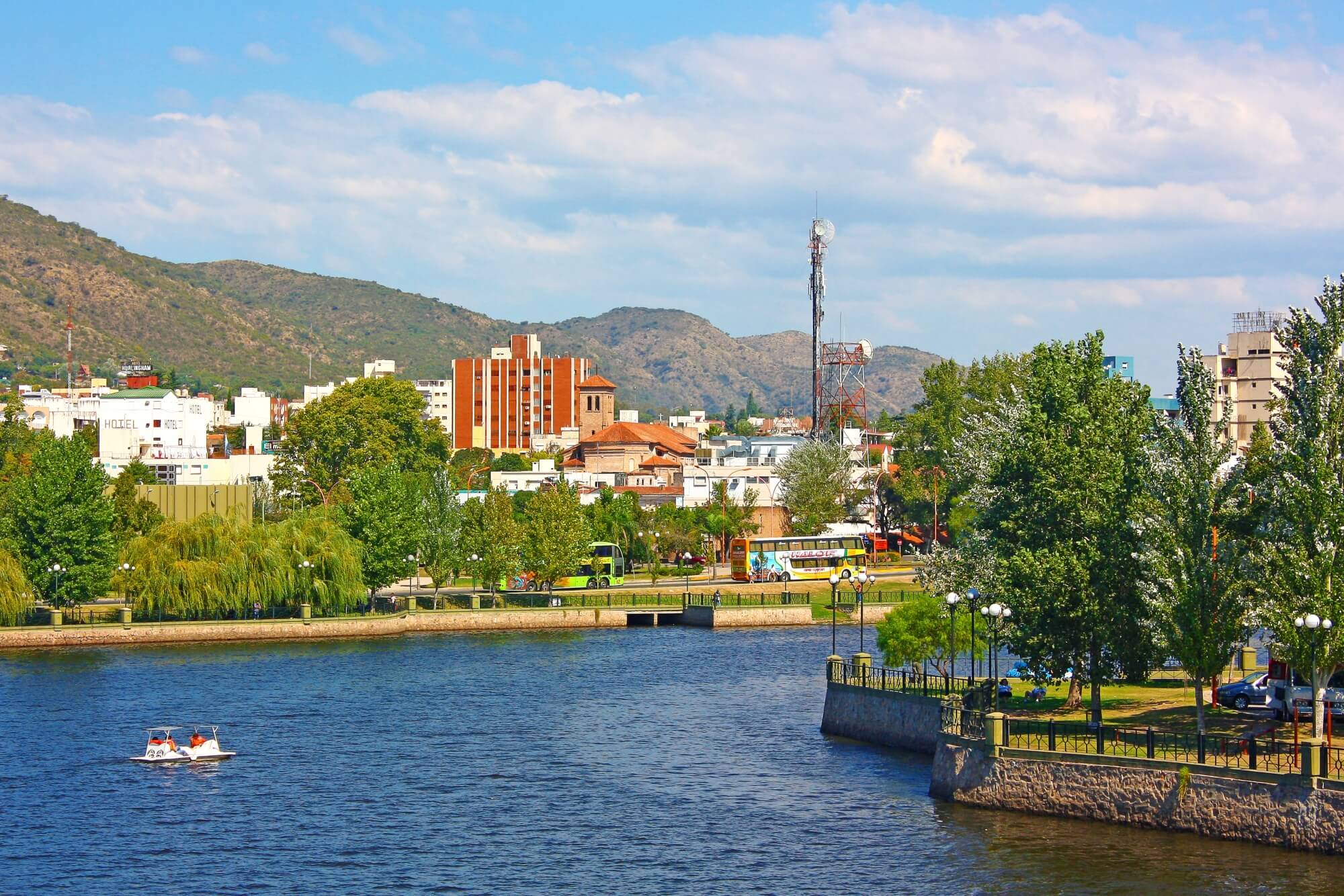
The city lies on the slopes of the Sierras Chicas in the Valley of Punilla, a major tourist destination in Argentina. Every summer, a massive crowd of tourists flocks to this vibrant inland beach resort. Renowned for its sprawling mega-clubs and bustling bars, the town has become a hub of excitement and energy. So it does get noisy and crowded.
One of the best ways to fully appreciate the picturesque landscape is by riding on the Villa Carlos Paz Chairlift. Going up to 900 meters (2900 feet) above sea level, this chairlift gives an exceptional view of the stunning mountain range and the surrounding Valley of Punilla, offering a panoramic view of the area.
The artificial San Roque Lake, built in 1886, is a perfect place for a lovely day out. There are many good places around the lake to walk, have a picnic, play soccer, and take a catamaran tour.
Apart from its expansive parks and serene lakes, this town boasts diverse theaters within its compact downtown area. These venues host various performances and shows throughout the year.
The central area is also brimming with shops that showcase Cordoba's traditional foods and produce. Here, you can indulge in delights like alfajores from renowned establishments like Alfajores La Quinta and Chammas and sample miniature bottles of Fernet, a popular local liqueur.
As it is a small city and a popular tourist destination, long-term rentals can be hard to find, but they are still available. A two-bedroom apartment can be found at about $400 a month. A three-bedroom house with a shared pool can be found at about $750 a month.
6. Rosario
Rosario, Argentina's third-largest city, is often called a "town disguised as a city."
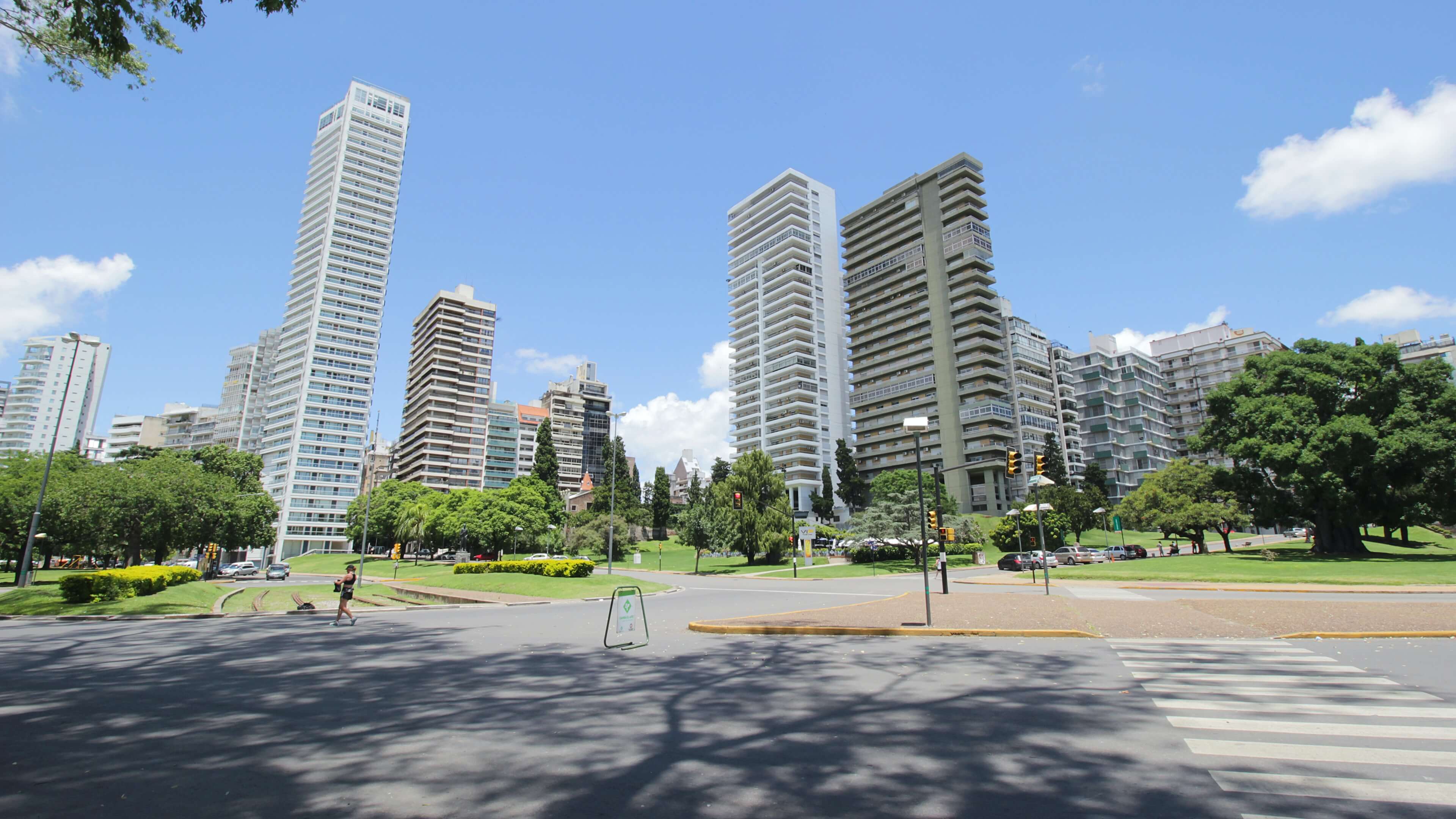
This city in the province of Sante Fe is quite unassuming. There are no outstanding landmarks here or huge meaningful events. Instead, it's a normal average working and living town, very community-oriented, and becoming a popular destination for expats.
Rosario is a port city on the Paraña River, offering culture, history, and vibrant nightlife.
Compared to their Buenos Aires counterparts, the locals, known as Rosarinos, are more laid back and enjoy spending time outdoors. The city's Costanera, or riverfront, offers beautiful walks, skate parks, cafes and restaurants. The northern stretch is perfect for summer beach days and waterfront dining.
Known as a party town in Argentina, Rosario boasts a young population and diverse bars and clubs. One of them is El Cairo, a legendary bar nestled in the heart of Rosario. It holds a rich history and is widely recognized as one of the city's most traditional and renowned establishments.
Rosario is well-connected to Buenos Aires. A bus ride from the Retiro station in BA takes approximately 4 hours to reach Rosario.
There are daily flights available from Buenos Aires, which take less than an hour. You can also travel by train, which takes 9 hours.
The rent in Rosario can vary depending on the location and size of the property.
You can rent a 3-bedroom house in a popular area of Fisherton with a garden and a garage for just over $1000 a month. A two-bedroom unfurnished apartment in the center can be rented for under $500. Go a bit higher, and a budget of $600 can get you a very nice 1-bed penthouse in the center.
7. Salta
Salta, in northwestern Argentina, is the capital of the Salta province sharing its name. Nestled to the east of the majestic Andes mountain range, this city is surrounded by scenic valleys, most notably the Lerma Valley, 1,187 meters above sea level.
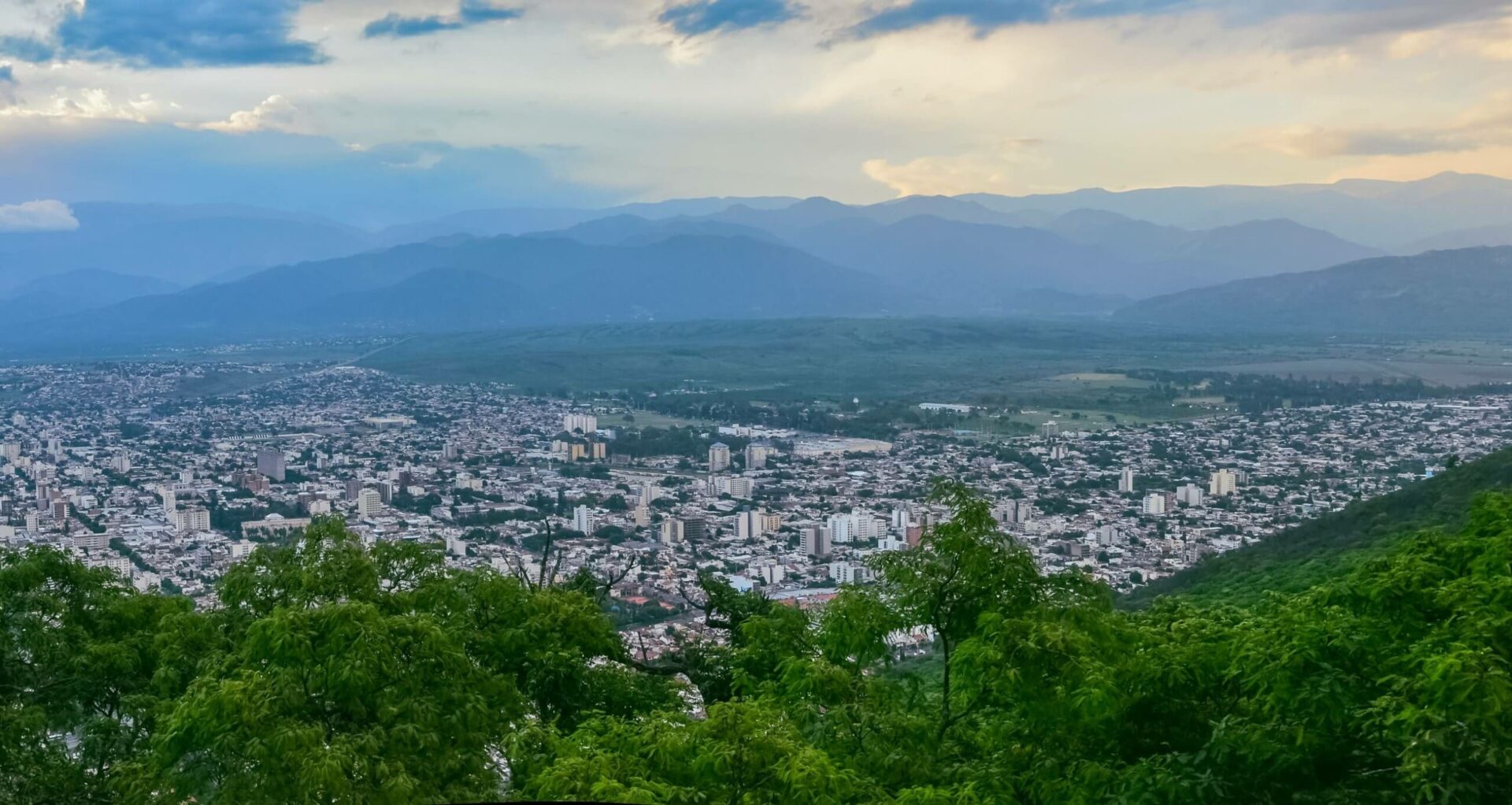
Salta is renowned for its serene beauty, offering a respite from the bustling pace of urban life. It presents a unique way of living, and it is one of the best locations if you are looking to slow down and relax.
The nature around is amazing, and if you're an adventure seeker, you will appreciate various activities available within a few hours of the city.
Salta, being a relatively young city and home to two universities, offers a vibrant nightlife from bars that keep their doors open until 5:30 a.m. to nightclubs that come alive at 11 p.m. and stay open until dawn.
The Balcarse promenade serves as a vibrant hub of Salta's nightlife, teeming with bars, clubs, and restaurants.
The traditional peñas (gatherings) are something special! These gatherings, accompanied by guitars and flowing wine, bring people together in a friendly atmosphere that grows even warmer after a couple of glasses.
The thing to keep in mind is the fact that English is not widely spoken here. Knowing at least some Spanish is essential for day-to-day communication if you are seriously considering living here.
You can rent a one-bed apartment in Zona Centro for $290. A lovely and spacious two-bed apartment can be rented for $800. Go higher, and £1000 can get you a 120 sq m two-bed apartment in Downtown Salta with all the amenities, including a pool, gym, and a rooftop cafe.
8. Bariloche
The city of San Carlos de Bariloche in the Rio Negro province is renowned for its stunning Nahual Huapi Lake and Nahuel Huapi National Park, breathtaking Andes Mountains, friendly locals, lively craft beer scene, and abundant outdoor activities nearby.
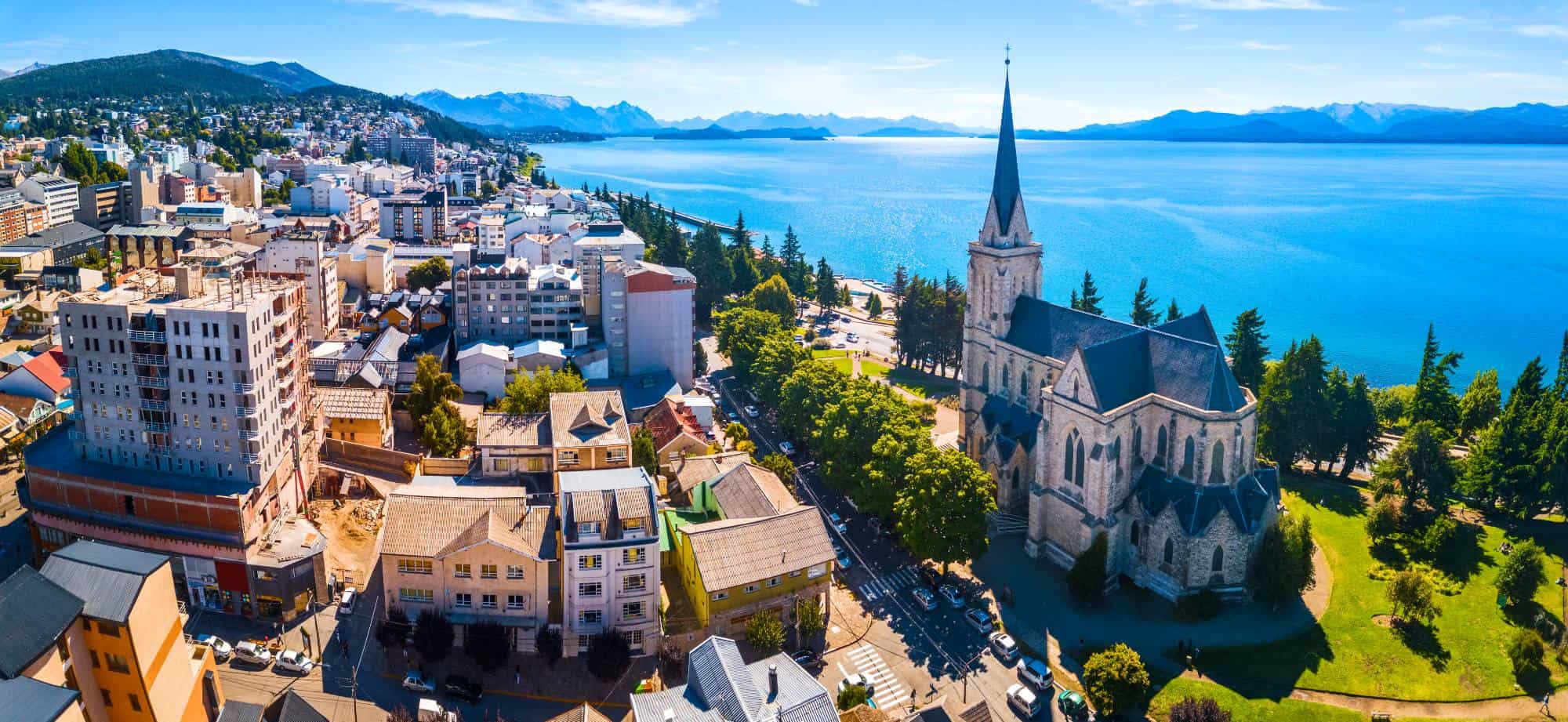
People often describe the area around Lake Nahuel Huapi as a Switzerland of Argentina. Bariloche is the hub of this stunning region. The city's Alpine-style architecture and breathtaking natural surroundings have become a major tourist center, offering skiing, trekking, and mountaineering facilities.
The city and its surroundings, adorned by eight lakes, boast some of the most stunning landscapes in Argentine Patagonia and South America. It's definitely one of the best destinations for adventure and natural beauty.
Bariloche is well-connected. It is about a two-and-a-half-hour flight from Buenos Aires and a 25-30-minute drive from the airport into the city center.
Finding long-term rentals in the city center of Bariloche can be challenging, especially during the high season (December - February). Private furnished studio apartments in the city center cost between $350 to $500, depending on the size and quality.
You can look for long-term rentals outside of town, the area known as the "kilometers." The kilometers stretch out along the shores of Lake Nahuel Huapi for approximately 25 kilometers, with the main road being Bustillo.
There are many suburban areas off of Bustillo that offer stores, restaurants, and good housing options. It's easy to find a one or 2-bedroom house for around $400 to $700 a month here.
Having a car is vital if you want to be able to enjoy all the beauty in the region.
9. San Miguel de Tucumán
San Miguel de Tucumán, or Tucumán for short, is located a good distance north of Buenos Aires and is home to some of Argentina's most significant historic places.
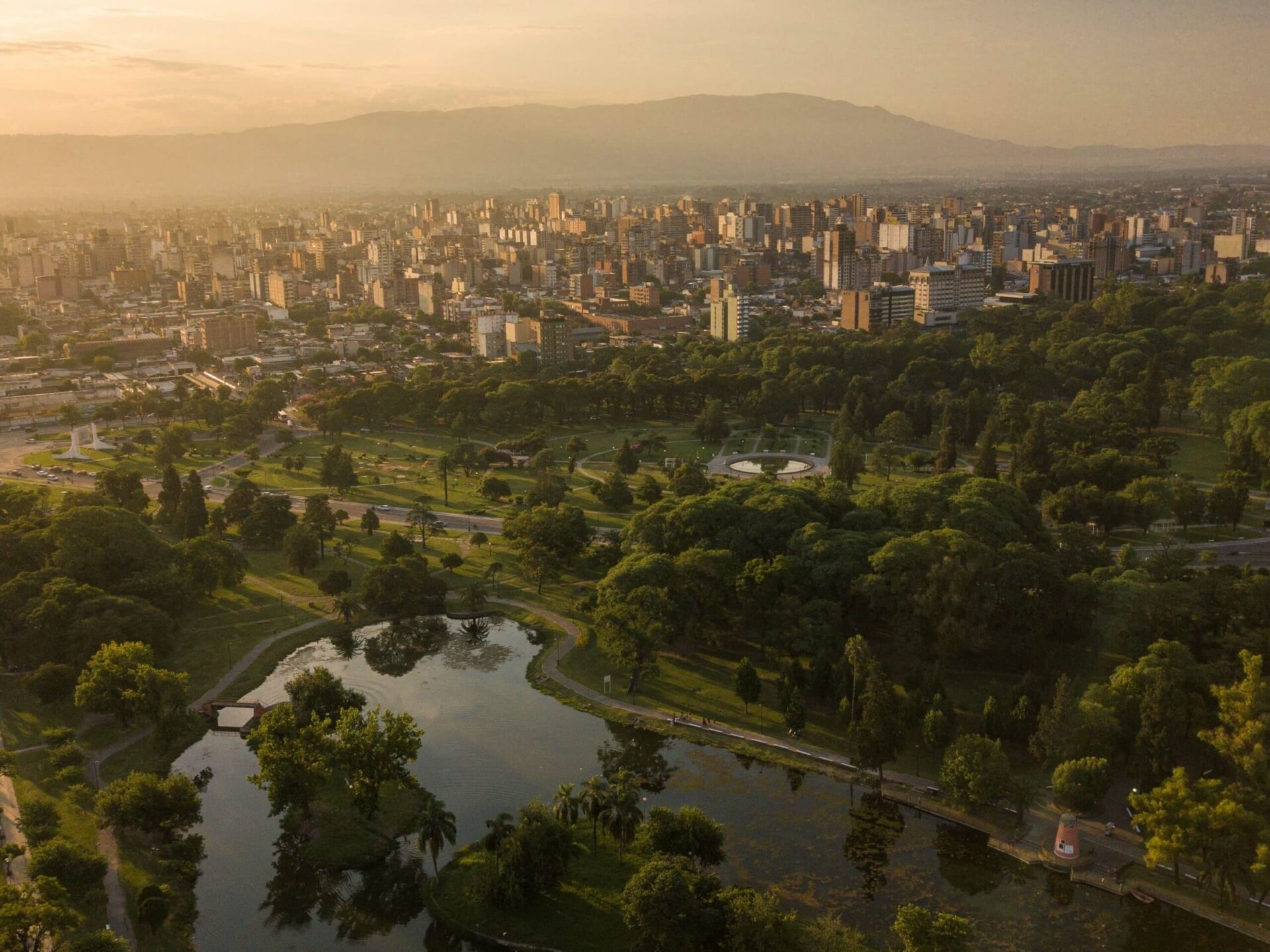
Being a working-class city with only a few tourist sites and activities, Tucumán is often overlooked in favor of the more popular Salta province and city to the north.
However, if you do not mind going a bit off the beaten track, Tucumán has a lot to offer. There are plenty of hidden gems to discover, making it a worthwhile destination if you love a bit of adventure, the outdoors, and affordable living.
The province of Tucumán boasts breathtaking landscapes, ranging from deep canyons to the majestic Nevados del Aconquija mountains.
Fondly known as "The Garden of the Republic," Tucumán offers a wealth of outdoor activities across diverse ecosystems, including lush jungle rainforests and snow-capped peaks, all conveniently accessible within a few hours' drive from the city.
Here are a few tips to help make your life here truly enjoyable:
Traffic can get really awful here. However, having a car to be able to explore the region is a must. You can drive all over the province and to Salta, exploring the region's offerings and wine areas.
Learning the language can make a huge positive impact if you live here.
The nightlife here is great, thanks to the presence of numerous universities in the city. Many bars and clubs typically operate from Thursday to Sunday. Like in Buenos Aires, parties here don't kick off until after midnight.
A one-bedroom spacious furnished apartment in a very popular area can be found for around $400 a month. An average studio can be rented for $300, and a two-bedroom apartment - for around $350.
10. La Plata
La Plata, located just one hour south of Buenos Aires, is all about remarkable architecture, picturesque green spaces, and a vibrant university scene.
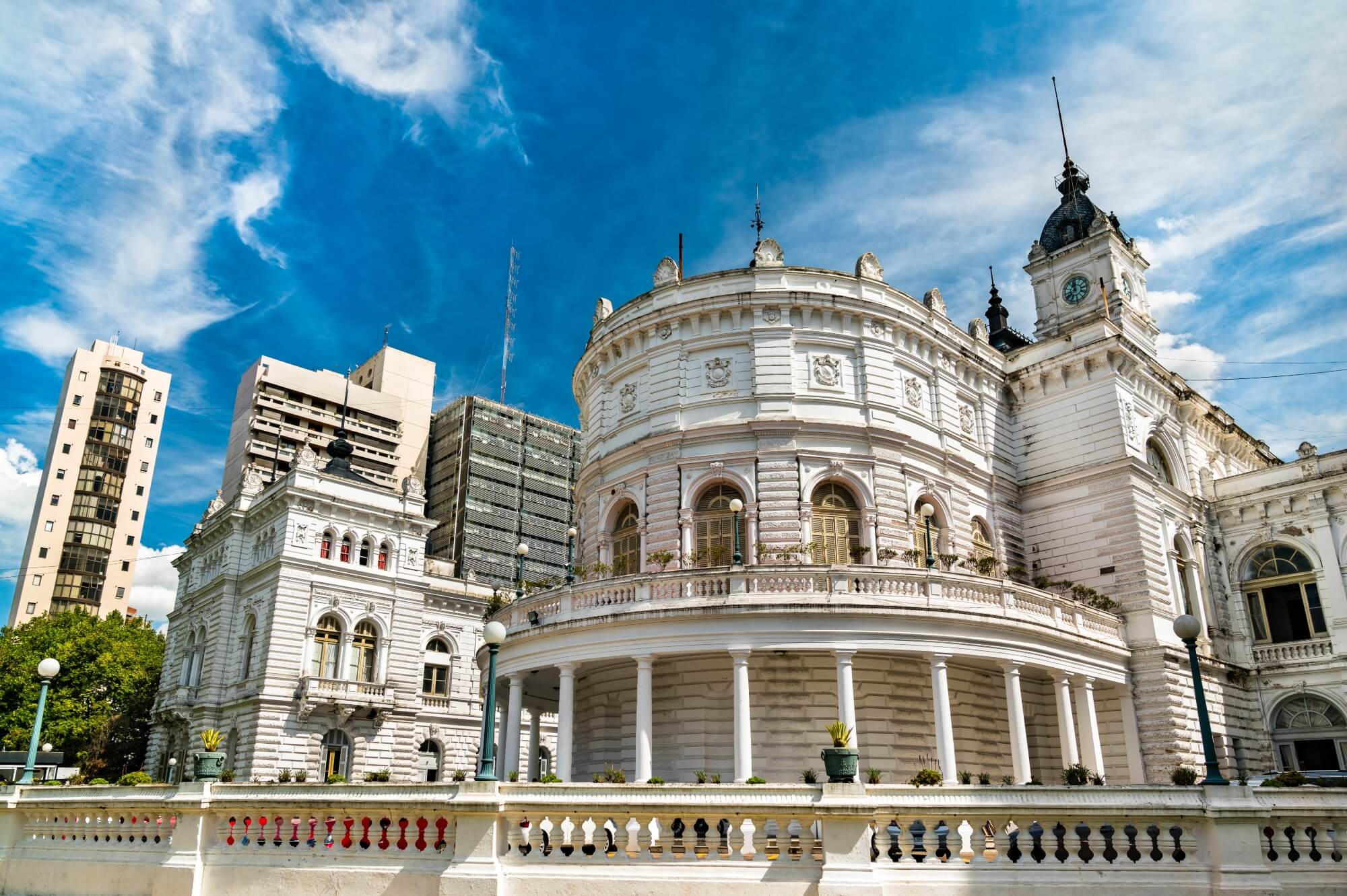
Boasting three universities, La Plata showcases a lively atmosphere with residents cycling around the city, contributing to its youthful ambiance reminiscent of prestigious academic towns like Oxford or Princeton, infused with a South American flair.
There is a story behind the city's planning and architecture. The founder of the city Dardo Rocha was a Freemason, which is evident in the city planning, namely, its synchronicity and symmetry.
There is an open space (plaza) every six blocks. In true Argentine fashion, the plazas are filled with bars and restaurants open around the clock, 24 hours a day.
La Plata's streets feature a diverse range of tree species like lime, jacarandas, and orange trees to help visually impaired people navigate the city.
There are plenty of theaters around here, like the Teatro Argentino, which is the top spot in the province for opera, classical dance, and modern performances. Then there's the Podestá Coliseum, a smaller theater with a cool early 20th-century vibe and amazing acoustics.
You will also find numerous independent theaters all over the city, plus some awesome music venues where up-and-coming bands rock the stage before making it big in Buenos Aires.
Besides small green spaces dotted around, you can enjoy two big parks, San Martín Park and Paseo del Bosque, where you can kick back and enjoy nature's beauty.
Considering how close to Buenos Aires is, it is a very affordable city. A nice studio in the center can be rented for about $350. A one-bed apartment can cost you around $400.
Final thoughts on the best places to live in Argentina
Argentina offers a plethora of remarkable places to live, each with its own unique charm and appeal. From the cosmopolitan allure of Buenos Aires to the tranquil beauty of Bariloche, the country presents diverse options to suit various lifestyles and preferences.
If you are moving to Argentina, regardless of whether you're drawn to bustling city life, the serene countryside, or the coastal retreats, you will find the place that is right for you.
Explore other popular destinations in Latin America:
- Living In Chile
- Living In Mexico
- Living In Panama
- Living In Costa Rica
- Living In Colombia
- Living In Brazil
- Living In Paraguay
- Living In Ecuador
Secure Peace of Mind with Best-Value International Health Coverage
International Citizens Insurance provide free, no-obligation quotes from the leading international health insurance providers with plans tailored to meet your needs. Trusted by thousands of expats worldwide.




